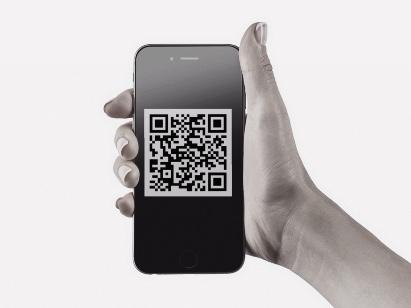Black and white – feel all right?
Since the first Quick-Response (QR) code appeared in 1994 and until now no such visible bridge between the offline and online worlds has emerged.
Those blocky black and white squares of digital information seemed destined to become a big thing, and they did. Nevertheless, the popularity of QR codes varies and they still have a mixed reputation around the world.
STILL RELEVANT IN 2019?
QR code compared to barcode has significantly increased information capacity, since it encodes information in both the horizontal and vertical dimensions. However, the success of the QR business was quite limited for years.
The new 2D codes required a significant upgrade to their scanning devices to replace barcodes, while other use cases such as phone number or website URL encoding were not yet in demand by business
IT SEEMED LIKE QR CODES HAD FAILED THEIR MISSION. BUT SINCE THEN THE MISSION ITSELF HAS EVOLVED
The game started to change when smartphones conquered the global market and QR codes demonstrated how mobile infrastructure could effectively be integrated into company media and marketing campaigns, gaining new opportunities to interact with customers.
WHEN DID THE TREMENDOUS GROWTH OF QR CODE START?
Dozens of QR code reading apps were developed for smartphones, but until recently, many of us were yet to be convinced as it still took time to sort through the scanning apps and choose the best QR code reader on the market.
Apple began to support the native QR scanner on its iOS 11 platform at the end of 2017, followed later by Samsung, Huawei and other major mobile phone vendors. The total number of smartphone users is expected to exceed five billion by the end of 2019. Scanning codes with smartphones has become very convenient, providing plenty of opportunities for seamless sharing of valuable information and leading to an increase in the number of QR Code types and uses.
Considered as a universal method of communication, QR technology is now used in all modern activities:
- Gaining online access to media files, documents and apps
- Stimulating likes and engagement in social networks
- Inviting customers to fill in surveys or share feedback in a pre-filled e-mail message
- And most importantly – payments!
WHY WILL THE NEXT 15 YEARS OF QR CODE SMASH THE LAST 15?
Many traditional and emerging global payment service providers have adopted QR Code as part of their payment channels.
China is the leader in QR codes for making payments. The two dominant Chinese payment ecosystems WeChat and Alipay enable users to make money transfers quickly and easily via QR code. The technology has almost replaced cash payments for P2P and small business transactions. China has just skipped the period of ubiquitous credit card use and switched from cash directly to mobile payments, transforming the way people transact.
THE PAYMENT INDUSTRY WILL BECOME EVER MORE COMPLEX AND VERSATILE, AND QR CODES ARE SET TO OCCUPY THEIR NICHE IN A CONSTANTLY EVOLVING E-COMMERCE MARKET
In 2017 80% of all payments in China were processed via non-banking platforms, and most of those via QR Payment.
The card-less lifestyle has become a trend in China. And the range of QR payment use cases is extremely wide:
- Payments in small stores and markets
- Taxis, bike rental and public transport payments
- Online shopping
- Payments in supermarkets and restaurants
- Cheque split and P2P transfers
- Utility bill payments, tips, charity
The ongoing movement towards a cashless society is forcing banks and financial institutions to constantly update their digital strategy.
Covering all existing types of payments and smartphone capabilities like QR payments, biometry, NFC payments, geolocation and notification options, SOLAR Mobile is a fantastic solution to facilitate your banking digital strategy and provide the best customer online banking experience.
NOT A FANTASY! GLOBAL OMNI-CHANNEL NETWORK
The key advantages of QR payments are the flexibility and convenience of ‘scanning’ for consumers, and the low operating costs for merchants with no need to issue physical cards, cheque books or acquire POS terminals.
So how soon will the classic isolated POS terminals become historical artifacts and give way to the new generation of light-weight integrated payment platforms? Although it is hard to predict when card terminals will disappear completely, it is clear that the traditional POS makers will have to adopt their products much faster and the future POS may not even resemble the classic countertop device with the wired PIN-pad.
The future of international payments is coming soon. Imagine completely cashless global economics, where people from different parts of the planet make payments without the need to sign up to a bank app or use a POS terminal. Any city, any country, anywhere you can buy or sell goods using only the camera on your smartphone. Does this seem a bit far-fetched? We will soon find out!
UNTIL VOICE OR FACE RECOGNITION TECHNOLOGY CONQUERS THE MARKET, QR CODES, IN WHICH A FEW THOUSAND CHARACTERS CAN BE ENCODED, WILL BE THE PERFECT OFFLINE-TO-ONLINE-TOOL FOR COMMUNICATION AND PAYMENTS ALL OVER THE WORLD


